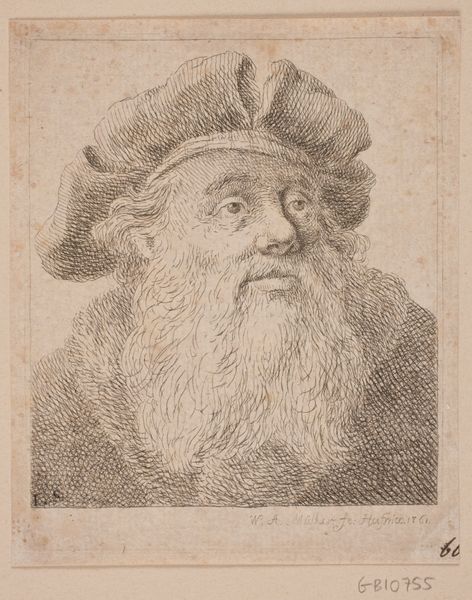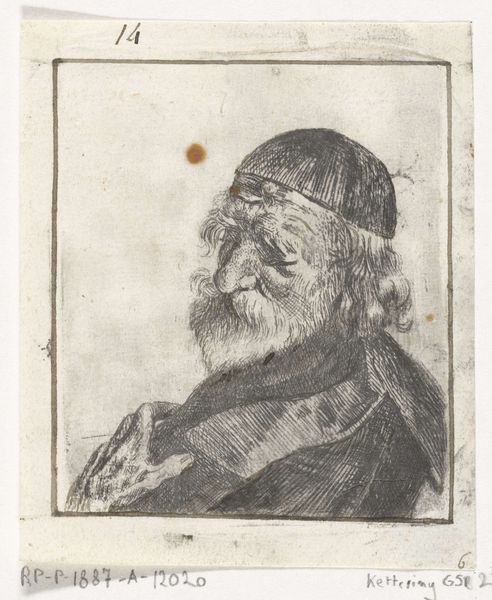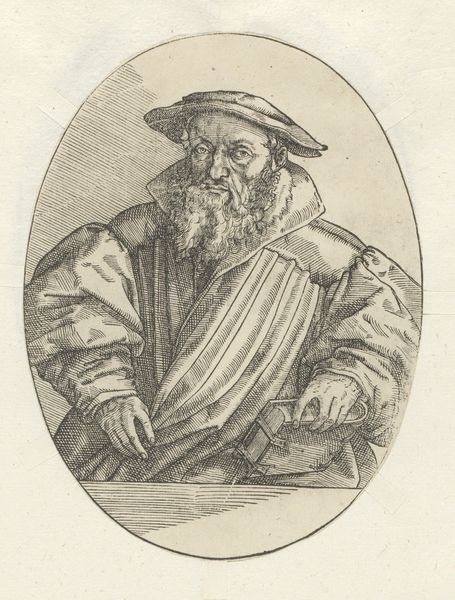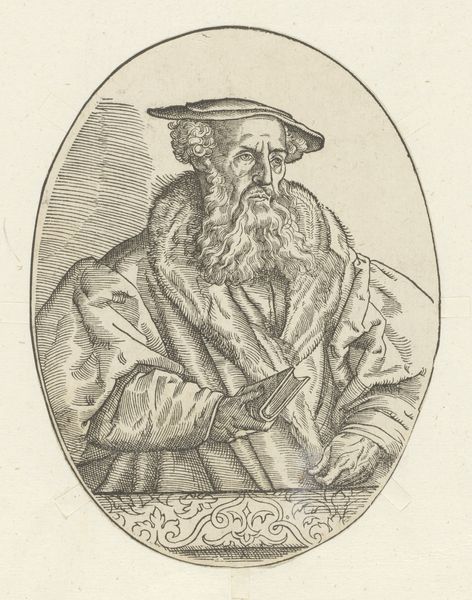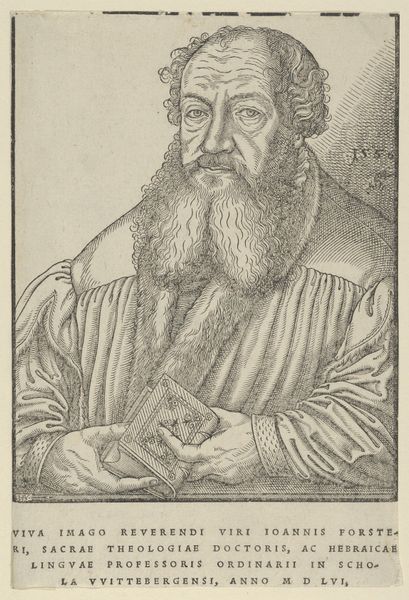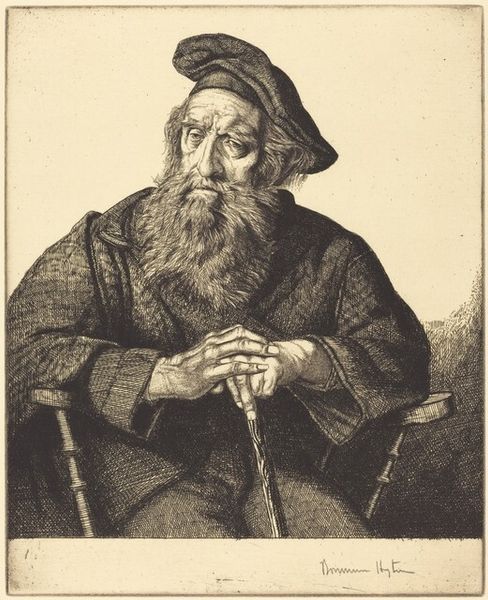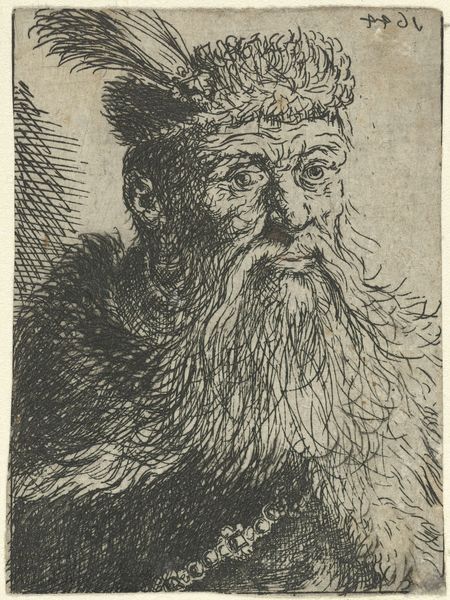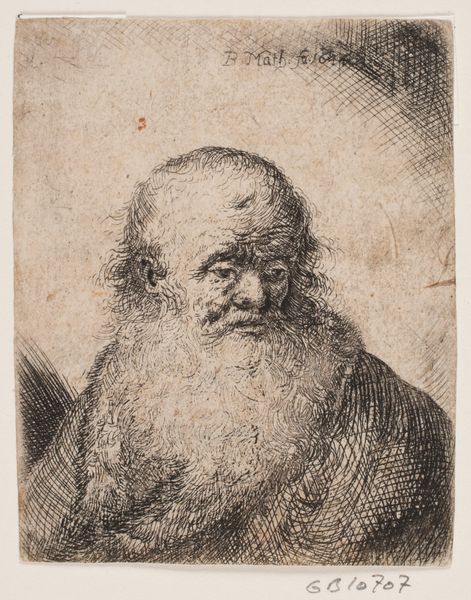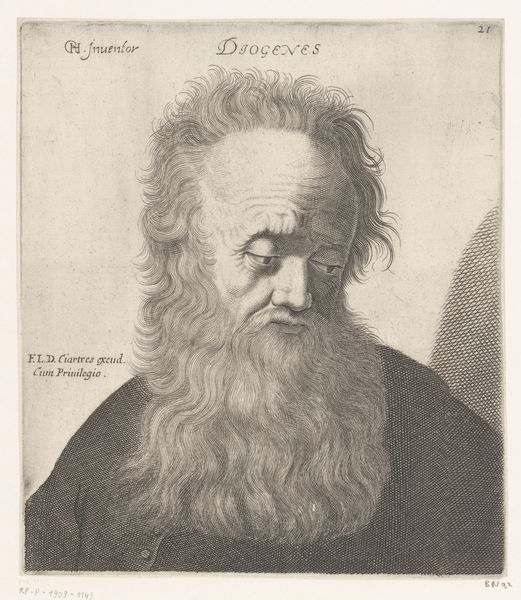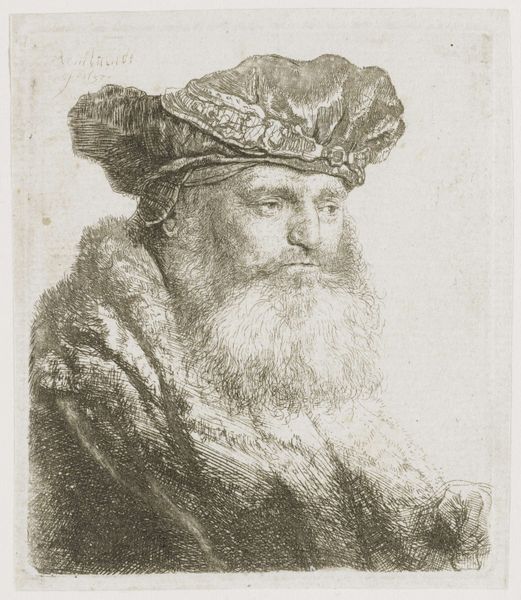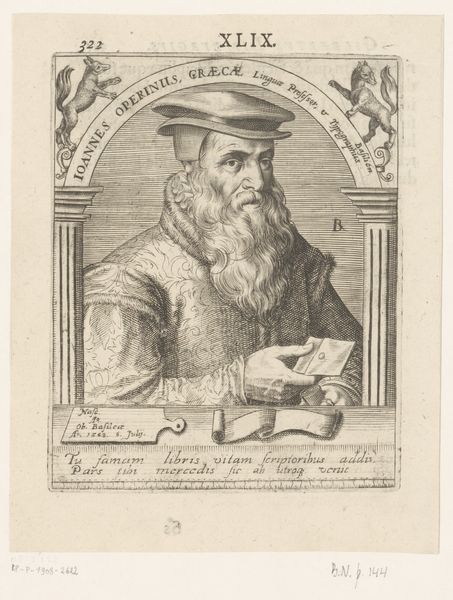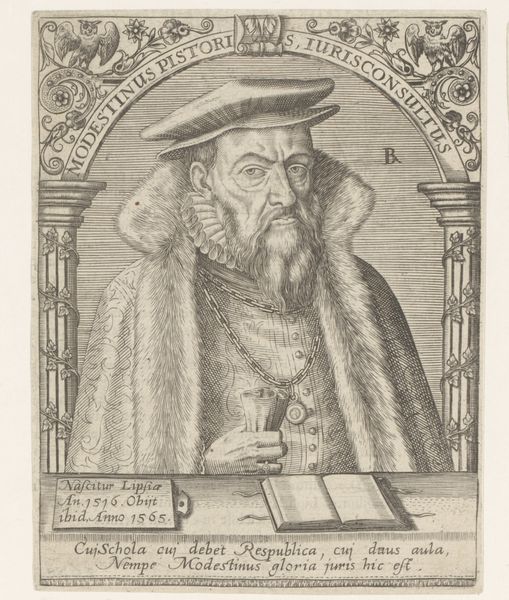
drawing, print, engraving
#
portrait
#
drawing
#
baroque
# print
#
pencil drawing
#
portrait drawing
#
history-painting
#
academic-art
#
engraving
Dimensions: height 94 mm, width 77 mm
Copyright: Rijks Museum: Open Domain
Editor: This engraving, “Buste van een man met lange baard en een muts op het hoofd” from sometime between 1600 and 1700 by an unknown artist, has such a weighty presence, doesn’t it? The lines carve out this figure with such detail, yet it all feels so…contained. What strikes you about this piece? Curator: It feels a bit like stumbling upon a forgotten sage, doesn’t it? His gaze is lowered, lost in thought or perhaps weary from centuries gone by. I wonder what tales that long beard could tell! But, beyond the immediate impression, notice how the engraver uses hatching to create such a palpable sense of texture. The fur of his hat looks genuinely soft. What kind of man do you think the artist had in mind? A philosopher? Editor: Possibly a philosopher. His aged appearance seems to suggest so. Or perhaps someone of great importance. But his downward glance could signify humbleness as well. How does this engraving compare to the other Baroque portrait engravings from this period? Curator: You raise a fantastic point. The Baroque period, with its emphasis on drama and grandeur, often used portraiture to elevate its subjects. Yet here, we find a certain intimacy, a vulnerability even, that deviates from the norm. What seems important in this portrait is a personal mood rather than glorification of status. I would argue it foreshadows a later sensitivity for portraiture! I see him almost stepping outside the grand stage of the Baroque and pondering the quiet moments. What do you think, could he also have been poor? Editor: Perhaps he might've been, even if he was of significant importance in his own way. It’s interesting how the engraving style, though meticulous, still leaves so much room for interpretation. I feel I know him in some way. Curator: Absolutely. It is, perhaps, in that very ambiguity that its power resides, inviting us to co-create his story, his world, with him. I didn’t consider he could also have been a pauper until this conversation, it definitely shapes the work in another way. Editor: Definitely a good reminder not to judge a book by its cover. I think it is interesting to compare our perceptions to the perceptions and values during the Baroque period.
Comments
No comments
Be the first to comment and join the conversation on the ultimate creative platform.
